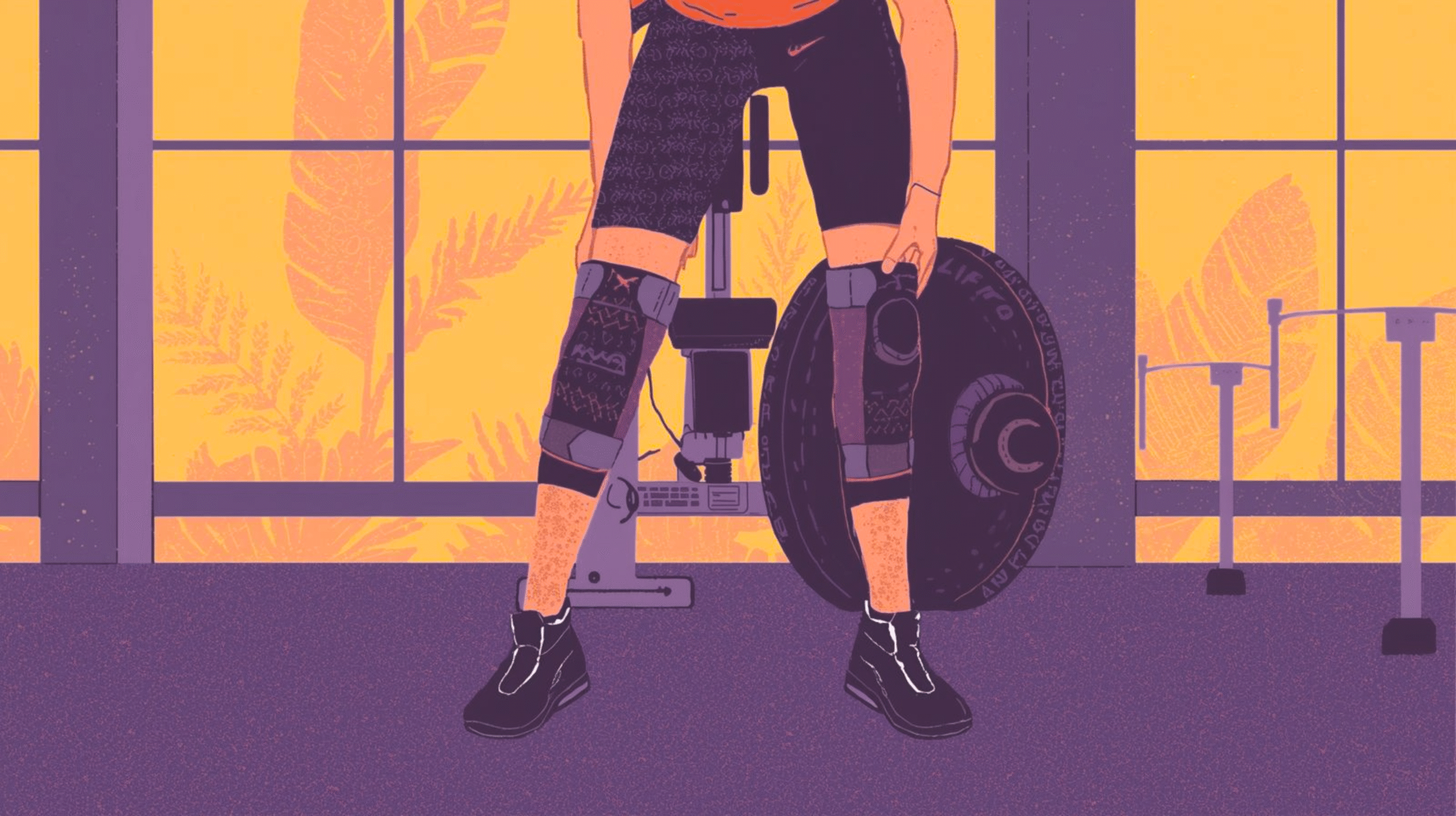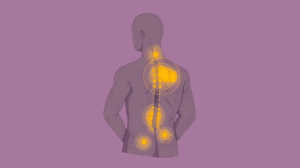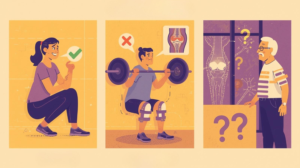Knee injuries are among the most common concerns in fitness and strength training. Whether performing squats, lunges, deadlifts, or participating in high-intensity interval training (HIIT), the knee joint undergoes considerable stress. This stress can lead to overuse injuries, ligament strains, and joint discomfort.
In recent years, knee caps, also called knee sleeves or braces, have become increasingly popular in gyms. Athletes, powerlifters, and fitness enthusiasts use them to enhance stability, reduce pain, and prevent injuries.
The purpose of this article is to provide an in-depth understanding of why knee caps are used in the gym, the benefits they provide, and the precautions necessary to ensure safe use. Safe practices during exercise not only protect the knee joint but also improve performance, confidence, and long-term joint health.
What Are Gym Knee Caps?
Knee caps, also known as knee sleeves, knee braces, or kneecaps, are supportive devices designed to protect and stabilize the knee joint during physical activity. They are widely used in gyms, especially in weightlifting, CrossFit, HIIT, and rehabilitation programs. These devices provide compression, stability, and protection, allowing athletes and fitness enthusiasts to perform exercises safely and with greater confidence [1].
Definition and Purpose
A gym knee cap is an external support that fits snugly over the knee joint. Its primary purposes include:
- Support and Stabilization: Helps keep the knee joint aligned during dynamic movements.
- Pain Relief: Reduces discomfort from previous injuries, arthritis, or overuse.
- Performance Enhancement: Increases proprioception (body awareness), boosting confidence and allowing more precise control during exercises.
- Injury Prevention: Reduces strain on ligaments, tendons, and surrounding muscles.
Types of Knee Caps Used in Gyms
1. Compression Sleeves
- Made of elastic or neoprene material, these sleeves provide mild support.
- They improve blood circulation, which helps in reducing post-workout soreness and swelling.
- Ideal for minor knee discomfort, preventive support, and light to moderate workouts.
- Benefits: Lightweight, flexible, and comfortable for all-day gym use.
2. Hinged Knee Braces
- Include metal or plastic supports along the sides of the knee joint.
- Provide strong stability, especially for athletes recovering from ligament injuries or post-surgery rehabilitation.
- Hinges allow controlled flexion and extension, reducing the risk of overextension or twisting injuries.
- Often recommended for heavy lifting, squats with high weights, or post-injury recovery.
3. Patellar Stabilizers
- Designed to keep the kneecap (patella) aligned during movement.
- Beneficial for patellar tracking disorders, chronic knee instability, or anterior knee pain.
- Maintains proper patella movement during activities like jumping, lunging, and running.
4. Post-Surgery Immobilizers
- Used after procedures like ACL repair, meniscus surgery, or tendon reconstruction.
- Restrict knee movement to allow safe healing while maintaining controlled flexion and extension.
- Usually adjustable, allowing a gradual increase in mobility as recovery progresses.
Functions of Knee Caps in Gym Settings
- Compression: Reduces swelling, fluid accumulation, and inflammation around the knee joint.
- Joint Stabilization: Supports ligaments, tendons, and surrounding muscles, preventing misalignment during heavy lifting or high-impact exercises.
- Enhanced Comfort: Keeps knees warm, reduces stiffness, and alleviates pain during movement.
- Injury Prevention: Protects against twisting, overextension, or repetitive strain injuries common in weightlifting, HIIT, and plyometric exercises.
- Performance Enhancement: Improves proprioception and mental confidence, allowing athletes to push limits safely.
Choosing the Right Knee Cap
Selecting the appropriate knee cap depends on activity type, intensity, and individual knee condition:
- Light Activity / Preventive Use: Compression sleeves provide sufficient support.
- Heavy Lifting / Injury Recovery: Hinged braces offer maximum stability.
- Patella Issues: Patellar stabilizers help maintain proper tracking and alignment.
- Post-Surgery: Immobilizers protect the joint while gradually allowing movement.
Benefits of Using Knee Caps in the Gym
Knee caps are not merely a trend, they provide tangible benefits that enhance safety, performance, and recovery during workouts.
1. Support and Stability
- Joint Alignment: Knee caps help maintain proper alignment during complex movements, preventing lateral deviations that can strain ligaments.
- Overextension Prevention: By limiting excessive movement, knee caps protect the anterior cruciate ligament (ACL), medial collateral ligament (MCL), and menisci from injury.
- Balance Enhancement: Provides feedback and improves weight distribution, reducing the risk of compensatory movements that may affect the hips or lower back.
- Example: A powerlifter performing squats with heavy weights benefits from knee sleeves that stabilize the joint, enabling proper form and safe lifting.
2. Pain Reduction
- Compression Therapy: Provides mild pressure that increases blood flow, reduces swelling, and relieves post-exercise soreness.
- Support During Recovery: Alleviates discomfort from previous injuries, arthritis, or tendonitis.
- Psychological Comfort: Reduces fear of knee instability, allowing confident movement during exercises.
- Example: Individuals recovering from minor ligament injuries often find they can perform low-impact exercises comfortably with compression sleeves.
3. Injury Prevention
- Ligament Protection: Reduces the risk of ACL, MCL, or meniscus injuries during high-intensity workouts.
- Patellar Tracking Support: Maintains proper kneecap alignment, particularly important in jumping or lunging movements.
- Cumulative Stress Reduction: Minimizes micro-trauma during repetitive motion exercises.
- Example: CrossFit athletes performing multiple box jumps or burpees benefit from knee sleeves that reduce impact and stress on the joint [2].
4. Improved Performance
- Proprioception: Enhances body awareness, enabling precise control over knee movements.
- Mental Confidence: Athletes feel secure lifting heavier weights or performing dynamic exercises.
- Reduced Fatigue: Stabilized knees allow surrounding muscles to work more efficiently, potentially improving endurance and performance.
- Example: Competitive lifters use knee sleeves during squats and leg presses to maintain proper form throughout long or heavy sessions.
Common Gym Activities Where Knee Caps Are Used
Knee caps are versatile and used across a range of gym activities. Each activity presents unique stressors on the knee, making support essential.
1. Weightlifting
- Squats: Knee caps stabilize the joint and provide feedback to maintain proper depth and alignment.
- Deadlifts: While the knee is less active than in squats, knee caps protect against minor twists during heavy lifting.
- Lunges: Helps maintain balance and reduce the strain of forward and lateral knee movement.
2. High-Intensity Training (CrossFit & HIIT)
- Jumping Movements: Box jumps, jump squats, and burpees place significant impact stress on the knee; the knee caps absorb part of this load.
- Repetitive Motion Protection: High-repetition exercises can cause wear-and-tear; knee caps help minimize cumulative stress.
3. Cardio Exercises
- Running & Stair Climbing: Provides additional joint support and reduces knee vibration during repetitive impact.
- High-Mileage Training: Particularly useful for individuals prone to patellar tracking issues or minor ligament instability.
4. Rehabilitation and Recovery Exercises
- Post-Injury Strengthening: Knee caps assist in low-impact movements, promoting proper biomechanics while protecting recovering tissue.
- Controlled Range of Motion: Hinged braces allow adjustable flexion, which is crucial for safe recovery.
Risks and Precautions
While kneecaps offer numerous benefits, improper use can result in adverse effects. Awareness of these risks is essential.
Overreliance on Knee Caps
- Muscle Weakness: Continuous dependency may weaken the quadriceps, hamstrings, and surrounding stabilizing muscles.
- Reduced Natural Stability: Overuse can decrease proprioception when the brace is not worn.
- Recommendation: Use knee caps as support, not a replacement for muscle strength; combine with regular strengthening exercises.
Incorrect Sizing
- Too Tight: Reduces blood circulation, leading to numbness, swelling, or tingling.
- Too Loose: Fails to provide adequate support, increasing risk of knee instability.
- Recommendation: Measure knee circumference accurately and choose a snug, comfortable fit that allows movement without pain.
Skin Irritation
- Sweat and Friction: Prolonged use, especially in high-intensity workouts, can cause rashes or chafing.
- Hygiene Risk: Accumulated sweat and bacteria can lead to fungal or bacterial infections.
- Recommendation: Remove and wash braces regularly, and use breathable materials to reduce friction.
Ignoring Proper Technique
- Kneecaps support but do not replace correct form.
- Relying solely on a brace while neglecting posture, alignment, or technique can cause injuries in other joints.
- Recommendation: Maintain proper lifting form and view the brace as a supplemental support tool.
Who Should Avoid Knee Caps in the Gym?
While understanding why knee caps are used in the gym highlights their advantages, knee caps are not suitable for everyone in every situation. Improper or unnecessary use can sometimes do more harm than good.
Individuals Without Knee Issues
People with healthy knees, good mobility, and strong lower-body muscles may not need knee caps for routine workouts. Overusing knee support in such cases can:
- Reduce natural muscle engagement
- Create psychological dependency on external support
- Limit long-term joint resilience
For these individuals, focusing on proper form, progressive loading, and strength training is more beneficial than relying on knee sleeves.
Those Experiencing Numbness or Circulation Problems
If knee caps cause tingling, numbness, discoloration, or cold sensations in the lower leg, they should be avoided until fit or material is reassessed. Poor circulation can increase injury risk rather than prevent it.
People Ignoring Pain Signals
Knee caps should not be used to “push through” sharp pain or swelling. Masking pain with support while continuing heavy training may worsen underlying issues such as cartilage damage or ligament strain.
Individuals With Skin Conditions or Sensitivities
Those prone to rashes, eczema, or fungal infections may experience irritation due to sweat and friction. In such cases:
- Use breathable, moisture-wicking materials
- Limit duration of use
- Avoid knee caps if irritation persists
Key takeaway: Knee caps are tools for support, not substitutes for strength, recovery, or medical evaluation.
How to Choose the Right Knee Cap Size for Gym Use?
Choosing the correct size is critical to unlocking gym knee sleeves benefits such as stability, pain reduction, and confidence, especially for movements like squats and deadlifts.
Measure Correctly
- Measure knee circumference as per manufacturer instructions (usually around the kneecap or slightly above it)
- Measure with the leg relaxed, not flexed
- Compare measurements with the brand’s size chart instead of guessing
Ensure Proper Fit
A well-fitted knee cap should:
- Stay in place during movement
- Provide firm compression without pain
- Allow full range of motion
Too tight: Can restrict blood flow and cause numbness
Too loose: Reduces effectiveness and stability
Match Size to Activity
- Compression sleeves: Snug fit for general workouts and cardio
- Knee cap for squats and deadlifts: Slightly firmer fit for heavy lifts
- Knee support for weightlifting: Structured or hinged braces require precise sizing for alignment and safety
Test During Movement
Before a full workout:
- Perform bodyweight squats or lunges
- Check for slipping, discomfort, or pressure points
- Adjust or resize if needed
If you’re still unsure are knee sleeves good for gym use in your case, choosing the right size and support level makes a significant difference. For deeper guidance on selecting proper knee support.
Expert Guidelines for Safe Use in the Gym

Safe and effective use of kneecaps requires understanding type, timing, and complementary exercises [3].
Choosing the Right Knee Cap
- Workout Intensity:
- Heavy lifting or competitive workouts may require hinged braces.
- Moderate- or low-impact sessions are suitable for compression sleeves.
- Knee Condition:
Pre-existing injuries or instability may necessitate braces with more rigid support or adjustable hinges.
- Fit and Comfort:
Ensure the kneecap covers the patella properly without slipping or restricting circulation.
Proper Usage During Workouts
- Wear During High-Impact Exercises: Squats, jumps, and lunges benefit most from knee support.
- Remove During Low-Intensity Sessions: Walking on a treadmill or light stretching may not require a brace, allowing natural joint function.
- Gradual Introduction: Beginners should gradually incorporate kneecaps to understand how they affect mobility and comfort.
Combine With Strengthening and Flexibility Exercises
- Quadriceps Strengthening: Leg presses, straight leg raises, and step-ups.
- Hamstring and Glute Activation: Deadlifts, bridges, and hamstring curls.
- Stretching and Mobility: Foam rolling, dynamic stretches, and yoga poses enhance joint flexibility.
- Benefits: Reduces brace dependency, enhances natural knee stability, and improves overall gym performance.
Hygiene and Maintenance
- Clean Regularly: Prevents bacterial growth and skin irritation.
- Air Dry: Avoid direct heat to preserve elasticity.
- Check for Wear: Replace braces if material weakens or hinges malfunction.
Listen to Your Body
- Stop exercising if you experience pain, numbness, or swelling despite wearing a brace.
- Consult a physiotherapist or doctor for persistent discomfort or recurring injuries.
Conclusion
Knee caps are valuable tools for gym-goers, offering support, stability, and confidence during workouts. When used correctly, they reduce pain, prevent injury, and enhance performance. However, overuse, improper fit, or neglecting proper technique can lead to complications. Combining knee cap use with strengthening exercises, proper form, and expert guidance ensures maximum benefit while minimizing risks.
Looking for more health and wellness solutions ? Don’t miss these related guides:-
Frequently Asked Questions:
1. Why are kneecaps used during squats in the gym?
Kneecaps stabilize the joint, reduce strain, and improve alignment, allowing safer squats and heavier lifts.
2. Can I wear knee caps for all gym exercises?
A: They are recommended for high-impact or heavy-lifting exercises. Low-intensity workouts may not require them.
3. Do kneecaps prevent knee injuries completely?
No, they reduce risk but cannot replace proper form, strengthening exercises, or rehabilitation.
4. How tight should a kneecap be for weightlifting?
Snug enough to provide support without restricting circulation or causing discomfort.
5. Can using kneecaps weaken my knee muscles?
Overreliance without exercise may weaken muscles; combine with strengthening routines for safety.
References
- American Academy of Orthopaedic Surgeons (AAOS) — Management of Osteoarthritis of the Knee (Non-Arthroplasty) Evidence-Based Clinical Practice Guideline. https://www.aaos.org/globalassets/quality-and-practice-resources/osteoarthritis-of-the-knee/oak3cpg.pdf American Academy of Orthopaedic Surgeons
- Hip and Knee Bracing: Categorization, Treatment Algorithm, and Evidence-Based Guidelines. https://www.ncbi.nlm.nih.gov/pmc/articles/PMC8189624/
- Knee orthoses (braces, sleeves, straps or bandages) for treating patellofemoral pain syndrome. https://www.ncbi.nlm.nih.gov/pmc/articles/PMC8763348/























